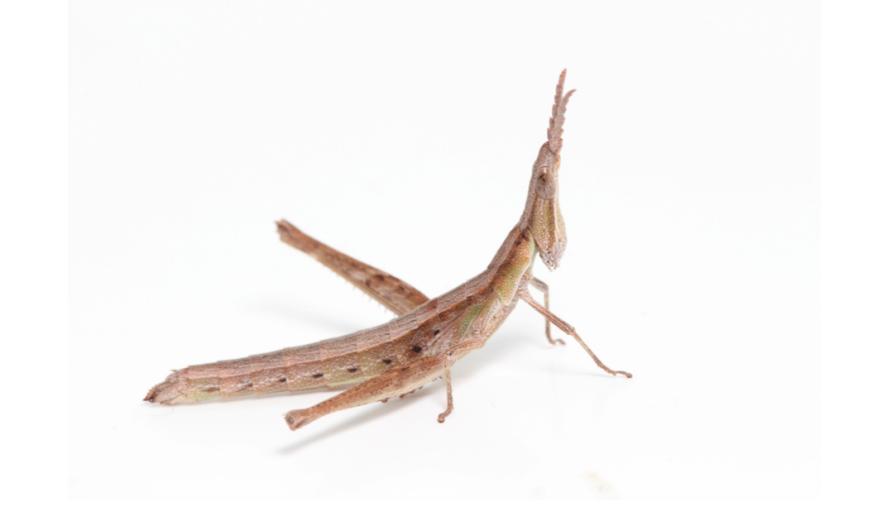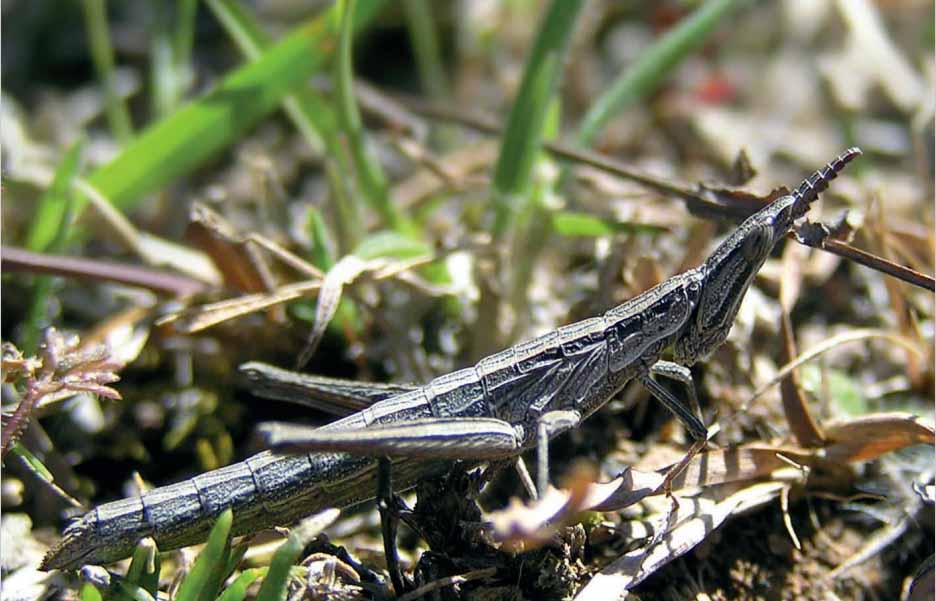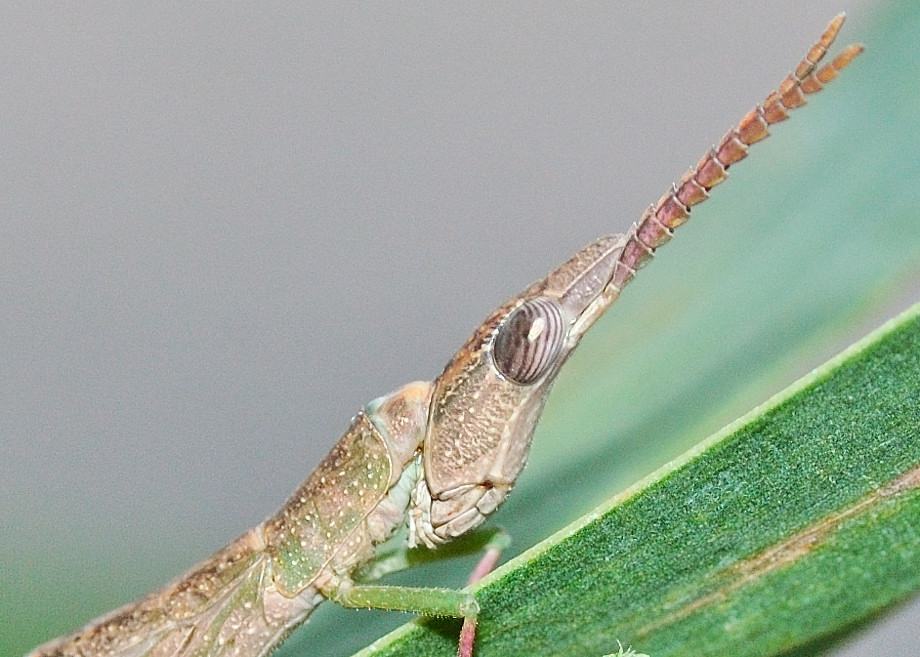KEY’S MATCHSTICK GRASSHOPPER
Keyacris scurra
Critically Endangered
The Key’s Matchstick Grasshopper, with its distinctive elongated body shape, was once common in the native grassland and grassy woodlands across inland south-eastern Australia. However, these habitats fall within the wheat and grazing belt which is one of the most heavily modified regions in the country and almost no original habitat remains.

Excitingly this species has just been rediscovered in Victoria after half a century, but is also known from a few locations in southern NSW and the ACT. We will work with our partners to try and locate and/or reintroduce this species to Victoria and also help raise awareness and support for insect conservation more generally

THE SPECIES
The Key’s Matchstick Grasshopper was first described in 1952 and falls into a family of grasshoppers that is unique to Australia. It is generally found in habitat dominated by the tall perennial grass, Themeda australis, which it does not eat, but may rely on for protection from predators and weather extremes. Like other members of the family, the Key’s Matchstick Grasshopper is flightless which has likely impaired its ability to persist across a fragmented landscape. Current work by researchers at the University of Melbourne aims to discover more about the genetic characteristics of remaining and extinct populations. Among other insights, this work will inform options for potential translocations of the grasshopper into or within Victoria.
